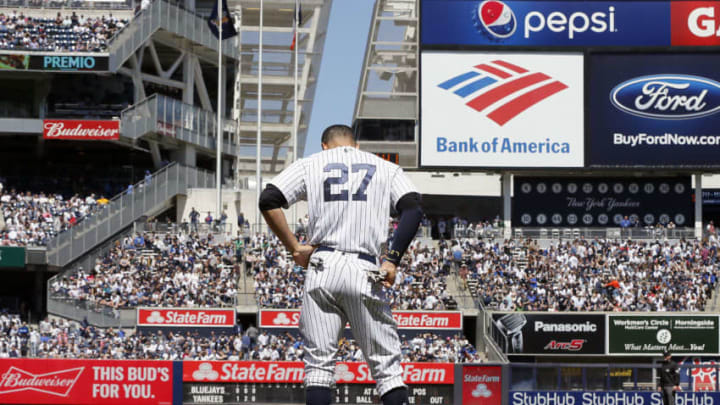
With the first month in the books, it’s worth looking at some struggling players, including Giancarlo Stanton, to see which ones we can expect to bounce back and which ones might be in for a rough season.
April was a fascinating month of baseball. It was loaded with surprises, like the Boston Red Sox winning 21 games and the New York Mets going 17-9. The Los Angeles Dodgers are looking bad, and the Arizona Diamondbacks look like the most complete team in the majors.
But perhaps most surprising of all is the list of players stumbling out of the gate, including the likes of Giancarlo Stanton. Can these struggling MLB players figure it out?
Will Giancarlo Stanton return to his MVP ways?
(Stats current as of the end of April.)
Randal Grichuk, OF – Blue Jays (.106/.208./.227, 2 HR)
I wrote a bit about Randal Grichuk here from a fantasy context, but it bears repeating. He’s hitting the ball plenty hard. Randal Grichuk, despite his paltry triple slash line, has the 14th highest rate of Brls/PA, which are a measure of high-quality contact.
Balls put into play with a usual batting average of at least .500 and a slugging of 1.500 qualify as barrels. Randal Grichuk is managing to do this in 11.7% of his plate appearances, which means his current stats are carrying with them an enormous amount of bad luck.
Following an awkward dive Monday night, Randal Grichuk has been placed on the DL with a knee sprain, but when he returns expect to see him start mashing. The prescription for Randal Grichuk’s ills is fairly simple. Mostly, he keeps hitting the ball hard. The fly balls will start getting down. The ground balls will start punching through. That .119 BABIP will climb.
How do we fix it?
One area in which he may be able to improve, however, is to go back to pulling the ball more often. His opposite-field percentages from his previous years in the majors are 17.5% in 2014, 18.7 in 2015, 21.6 in 2016 and 21.0 last year. So far this season he’s at 27.3%.
Randal Grichuck is at his best when he’s jumping on balls he can pull for power. His career pull slash is .380/.378/.740. The aberrations in his flyball, line drive and ground ball rates are likely just noise, but his pull percentage is something he can control a bit more.
